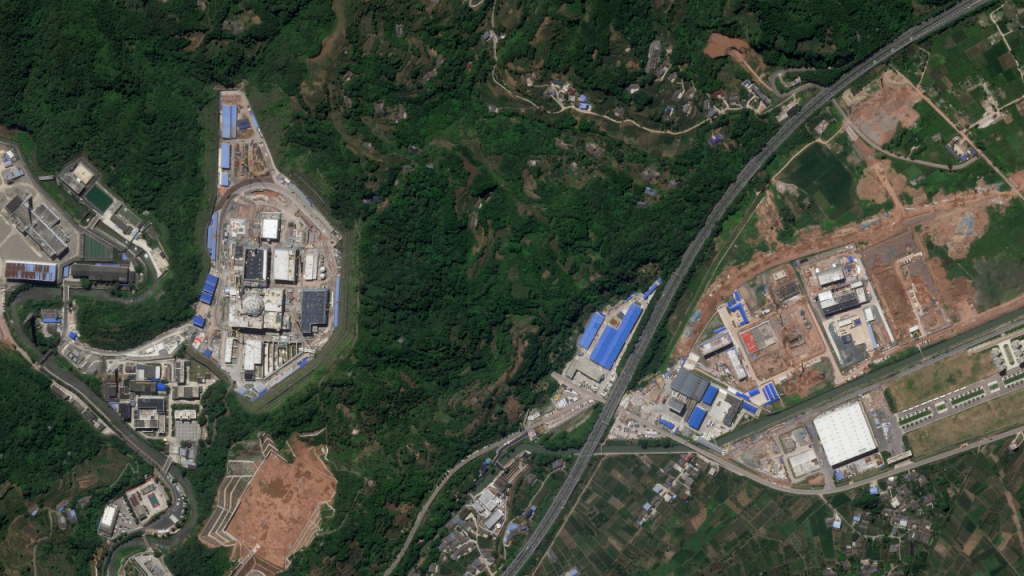China has recently taken a significant step towards developing its own nuclear-powered aircraft carrier by building a land-based prototype nuclear reactor for a large surface warship at the Longwei site in Sichuan. This project is part of China’s plan for naval nuclear propulsion as it aims to establish a “blue-water” force capable of operating globally. The addition of nuclear-powered carriers to its fleet would enable China to join exclusive ranks of first-class naval powers, currently limited to the United States and France. This development would symbolize national prestige for China’s leadership, fuel domestic nationalism, and elevate the country’s global image as a leading power.
Researchers at the Middlebury Institute of International Studies found evidence of China’s nuclear-powered aircraft carrier plans while investigating a mountain site near Leshan in Sichuan. They concluded that China was building a prototype reactor for a large warship, termed the Longwei Project. Satellite images and public documents, including project tenders and personnel files, supported their findings. The facility, known as Base 909, is controlled by the Nuclear Power Institute of China and houses the prototype reactor, which is expected to become operational soon. The reactor project is connected to a national defense project related to naval propulsion, indicating China’s pursuit of a nuclear-powered aircraft carrier.
China’s existing carriers, Liaoning, Shandong, and Type 003 Fujian, are conventionally powered and employ different launch methods. The Type 003 Fujian, launched in 2022, was the first carrier designed and built in China. While the country has confirmed the construction of a fourth carrier, there has been speculation that it may be nuclear-powered, marking a significant advancement in China’s naval capabilities. Developing nuclear propulsion for future carriers will allow China to run advanced systems, such as electromagnetic launchers and new technology weapons. Additionally, nuclear power will provide greater endurance and range, enabling Chinese carriers to operate in strategic hotspots such as the First Island Chain.
Chinese President Xi Jinping’s strategy for building a “first-class” navy and becoming a maritime power aligns with the country’s recent naval developments. China’s navy, already the world’s largest numerically, is rapidly modernizing and expanding its capabilities with the goal of operating globally. While China’s shipbuilding capabilities surpass those of the U.S., the Chinese navy still lags behind in some aspects. The U.S. has a significant advantage with its fleet of nuclear-powered carriers, allowing it to maintain multiple strike groups deployed worldwide at all times. However, the Pentagon is increasingly concerned about China’s modernization efforts and its emphasis on the maritime domain, including the design and construction of new carriers.
The pursuit of nuclear-powered carriers reflects China’s ambition to challenge U.S. military capabilities in the Indo-Pacific region and beyond. Operating nuclear-powered carriers would give the Chinese military greater flexibility and endurance to operate in strategic areas, including the First Island Chain where tensions with Taiwan and neighboring nations are high. China’s growing force of aircraft carriers extends air defense coverage beyond the range of land-based defenses, enabling operations farther from China’s shore. This development is part of China’s broader strategy to enhance its naval capabilities and project power globally, marking a significant evolution in its carrier development efforts.













